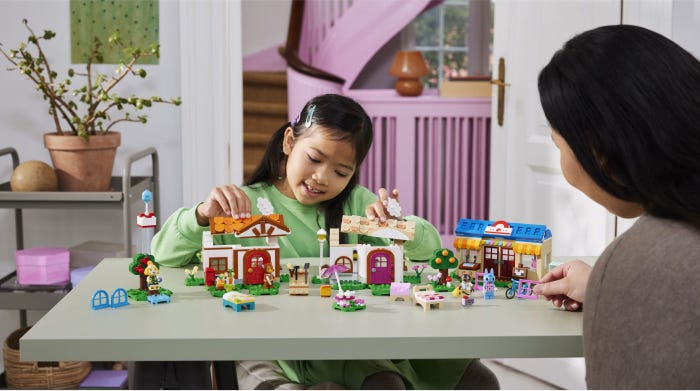Tips for setting healthy limits on video games
Want to encourage a balanced approach to video gaming in your household? You’ve come to the right place.
Set a screen-time allowance
Our devices might encourage us to be always on, but we all benefit when we take time off.
The World Health Organization’s screen time recommendations can help you understand what's appropriate for younger children, but ultimately, it’s up to every family to decide.
For example, you might be more inclined to encourage a two-hour video call with a friend who lives in another country because it fosters an important social connection, but would prefer your child didn’t watch online videos for two hours straight.
Remember, you don’t necessarily need to organise a family digital reset – although we’ve got plenty of tips if you’re giving it a go. Simply setting a daily or weekly screen-time allowance will give your kids plenty of opportunities to engage in offline activities.
And while – as a parent – it’s your responsibility to ensure the screen-time allowance is adhered to, you can empower your children to take charge of their well-being by involving them in the decision-making process. So kickstart a screen-time conversation with the help of our Build & Talk activity.
Set gaming locations
Your child loves to play video games anytime and anywhere, but having specific gaming locations can help manage their screen time.
Setting up in the living room presents the perfect opportunity to play together as a family and – when there’s a break in the action – initiate a conversation about digital safety. For example, you could talk to them about why it’s important to keep sensitive information private and secure – remember, it’s all part of your commitment to raising a digitally smart family.
Encourage breaks and physical activity
Some days, we secretly wish our kids would slow down and savor some stillness. But then when we see them immersed in a video game and worry that they aren’t getting enough exercise. Will we even find a happy medium? Well, yes.
The World Health Organization recommends children and adolescents aged 5-17 years should, on average, do an hour of physical activity a day.
So encourage your kids to press pause and incorporate a few 60-second fitness challenges into their video game breaks. How many squats or star jumps they can complete? Can they hold a plank position for the full minute? On your marks, get set, go…
Put homework and chores before gaming
Responsibilities. We’ve all got them. Even our kids.
And while your responsibility is to help them develop a happy and healthy relationship with technology – and there are plenty of resources to help you do that – theirs is to ensure video gaming doesn’t get in the way of their real-world obligations.
From tidying away toys to setting the table for dinner, discuss a few meaningful things your child can do while taking a break from screens. And no multi-tasking, having a conversation while holding a console doesn’t qualify as a break!
Monitor and discuss age-appropriate content
In addition to setting a screen-time allowance and gaming locations, now’s the time to come up with rules regarding the types of games your child plays.
Previewing game content, reading reviews, and checking age ratings will help you identify whether a video game is suitable for your child. But it’s equally important to involve them in the decision-making process.
Talk to your kids about their preferred games and discuss what themes and online interactions are appropriate for someone their age. Now’s also a good time to introduce the topic of cyberbullying, so your child knows what behaviors to look out for and what to do if someone upsets them online.
Helpful hints to ensure your limits work
Remember, consistency is the key. Having set these boundaries, be sure to stick to them. A recent survey revealed that where families have limits regarding screen time, only 19.9% of children think their parents always enforce them3. Bending the rules might make you the best grown-up in the world (for the afternoon, anyway), but it sends a confusing message to your kids.
And with just over half (54.1%) of the children surveyed saying their household’s rules on screen time are ‘just the right amount of restrictive’, we’re here to remind you that regularly reviewing their effectiveness will enable you to make adjustments where required.

